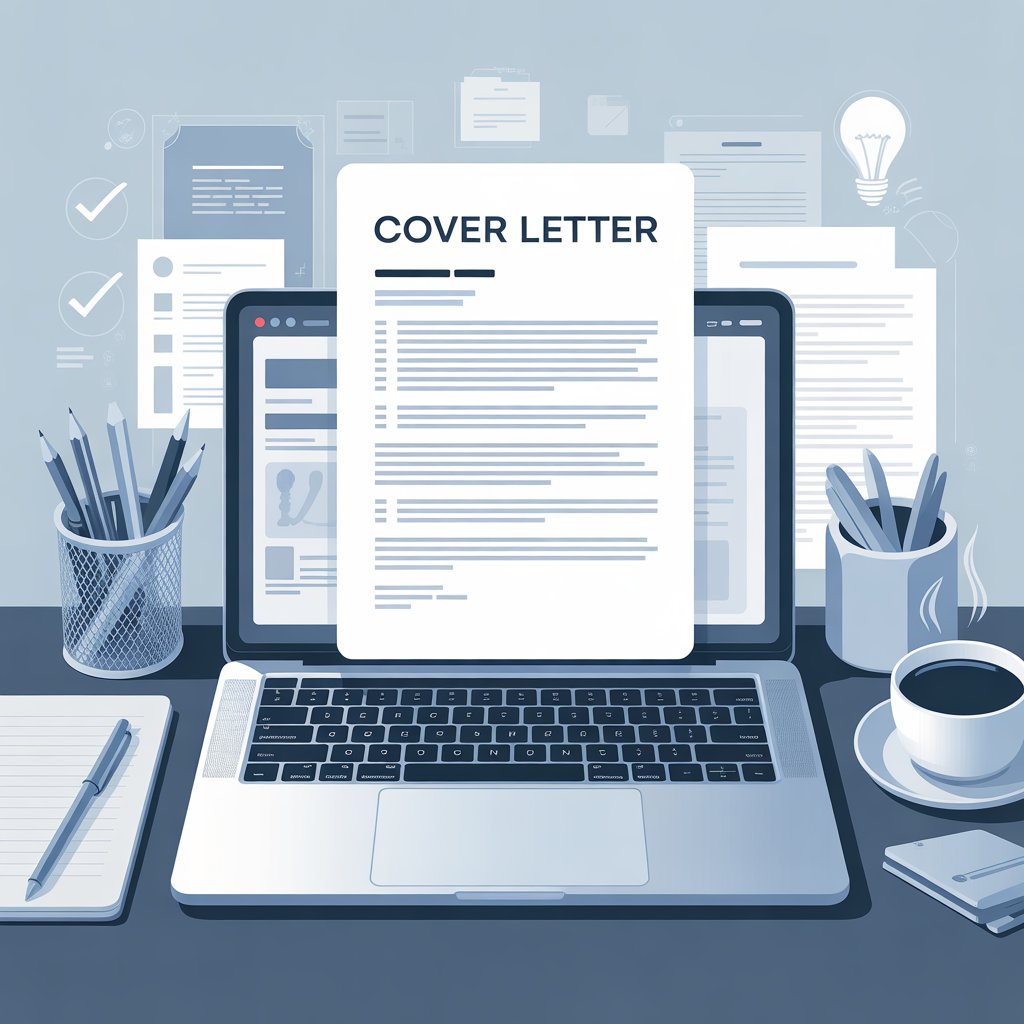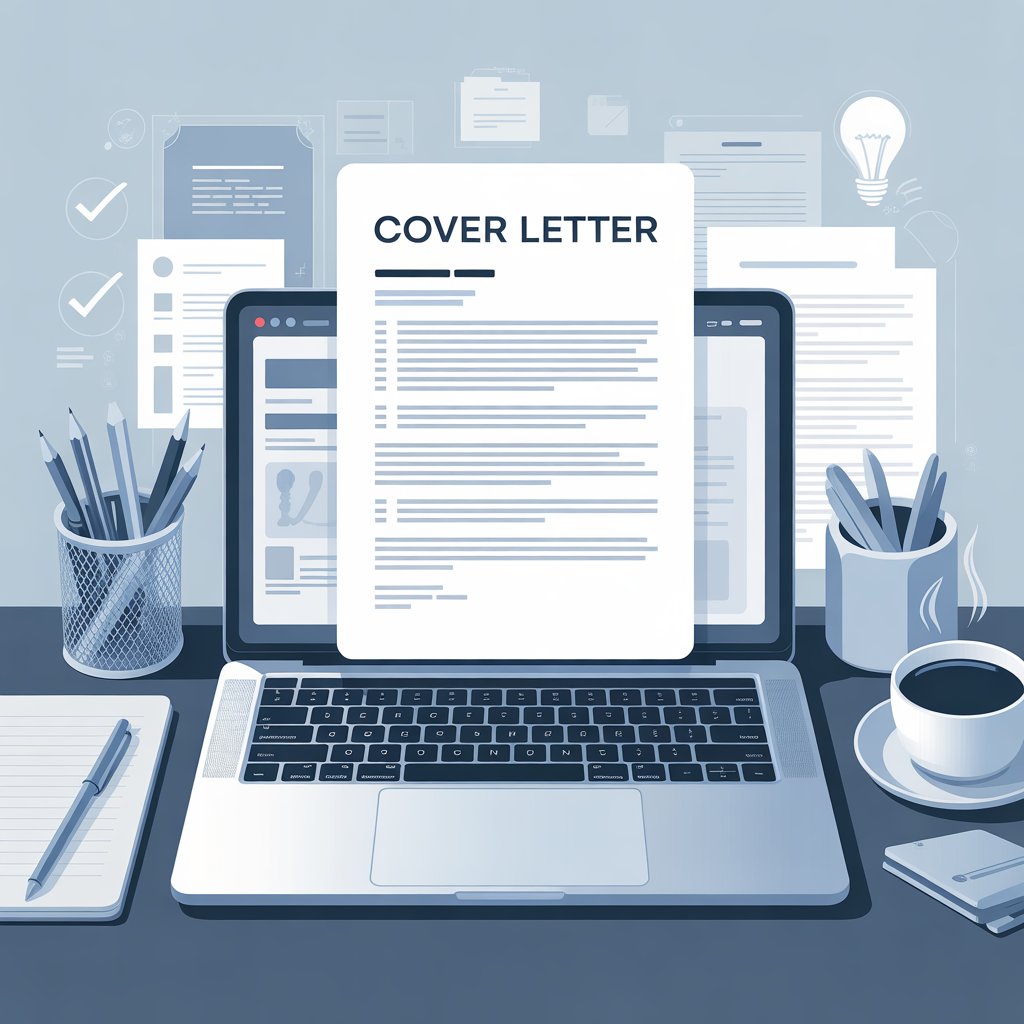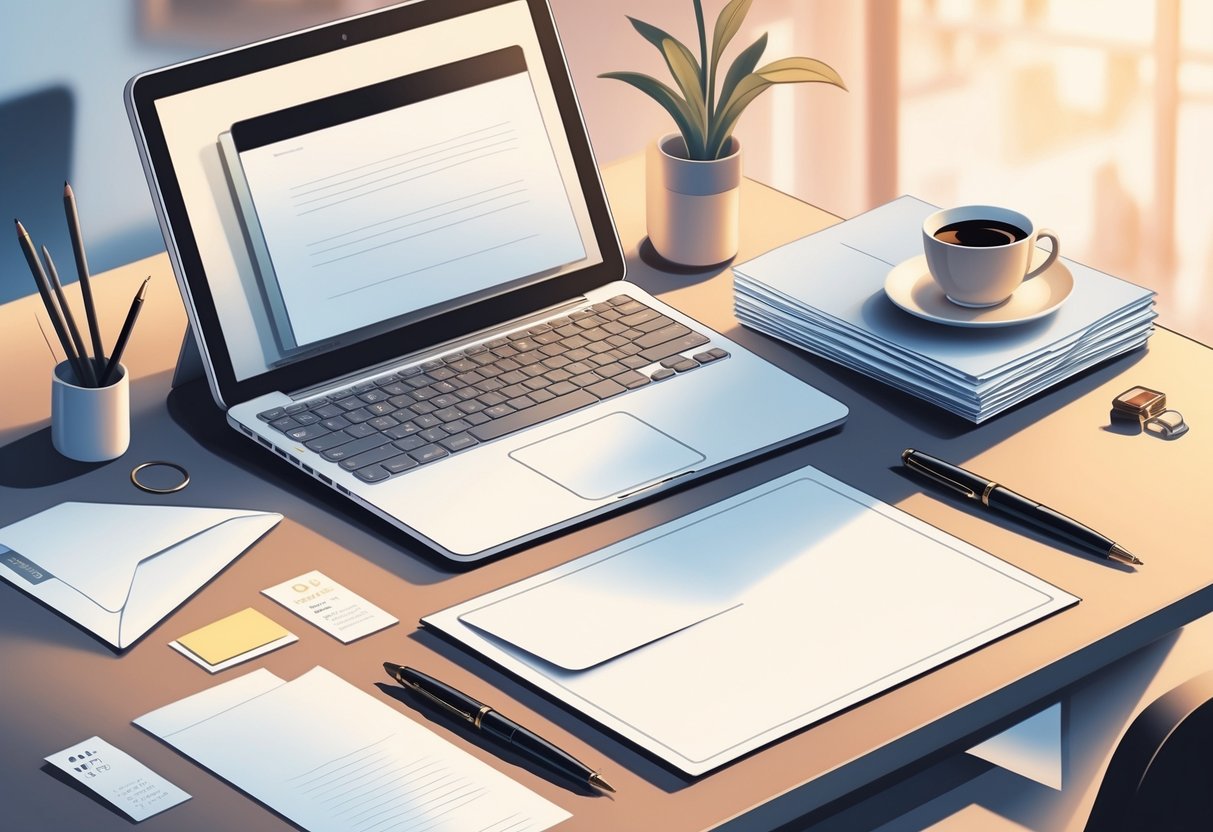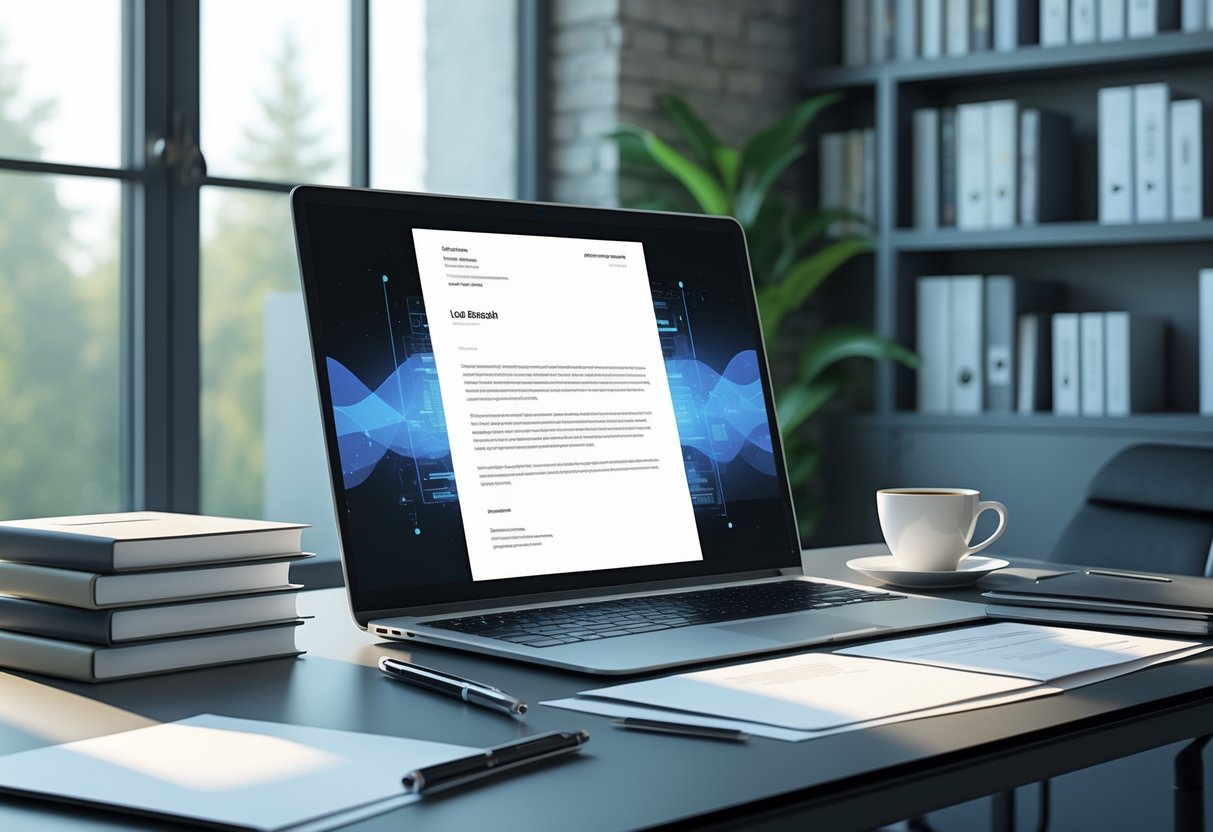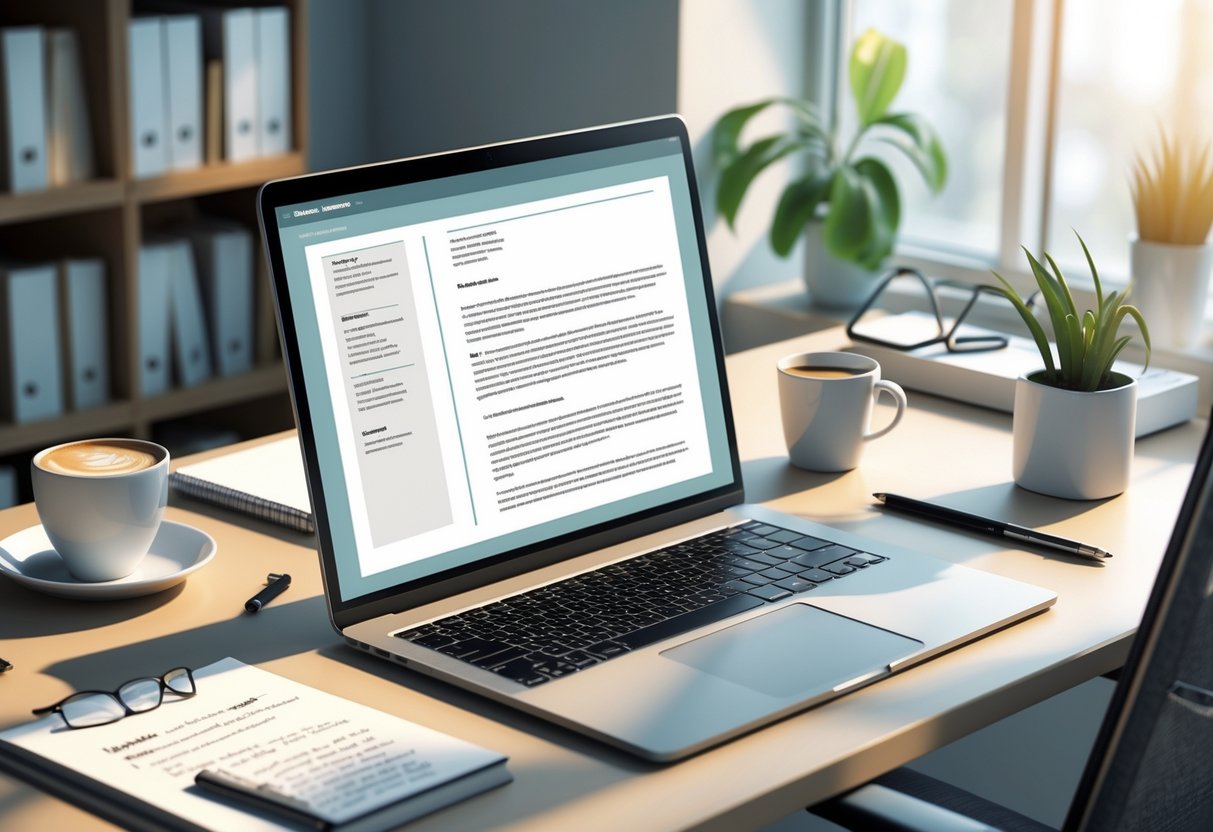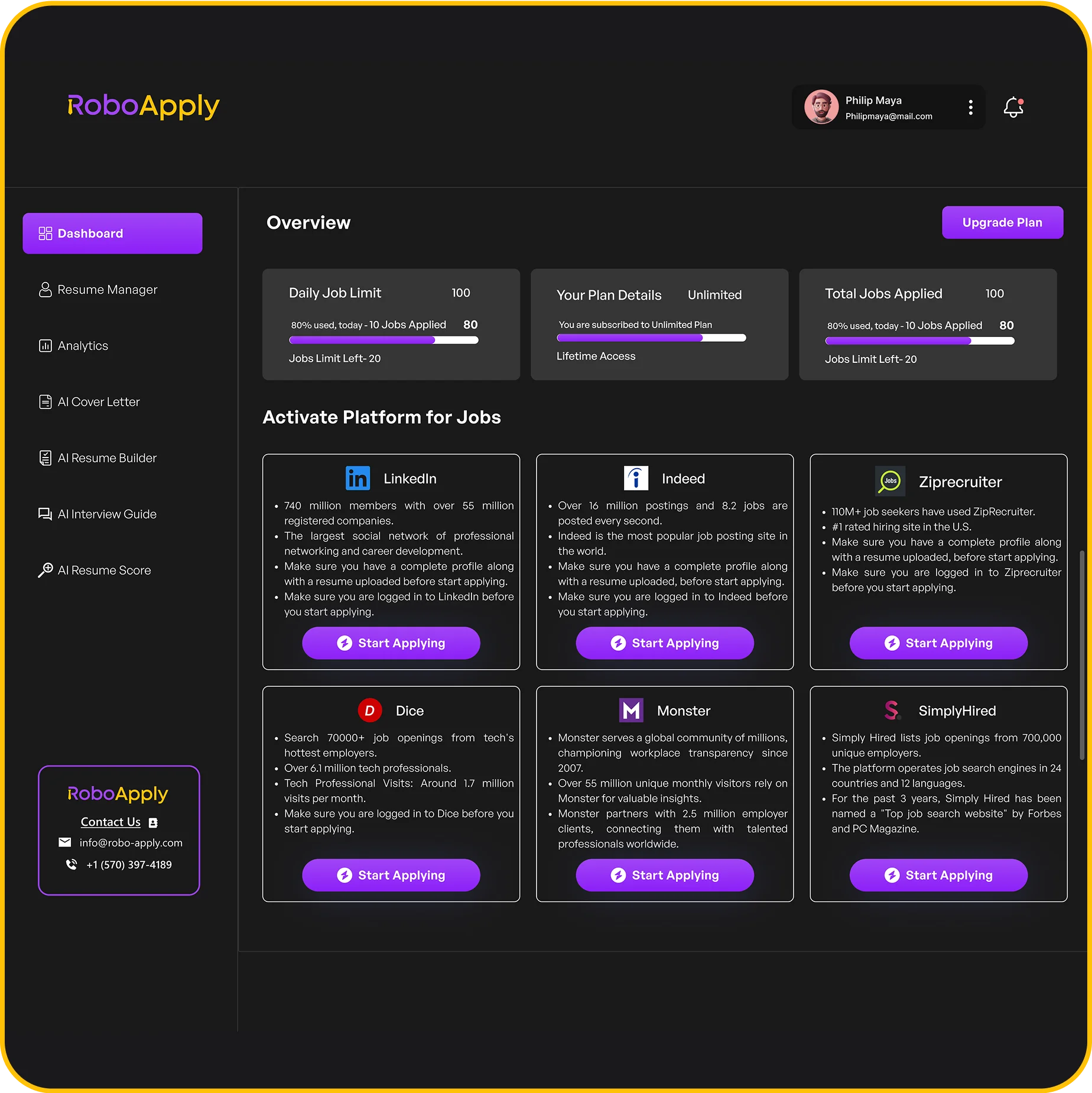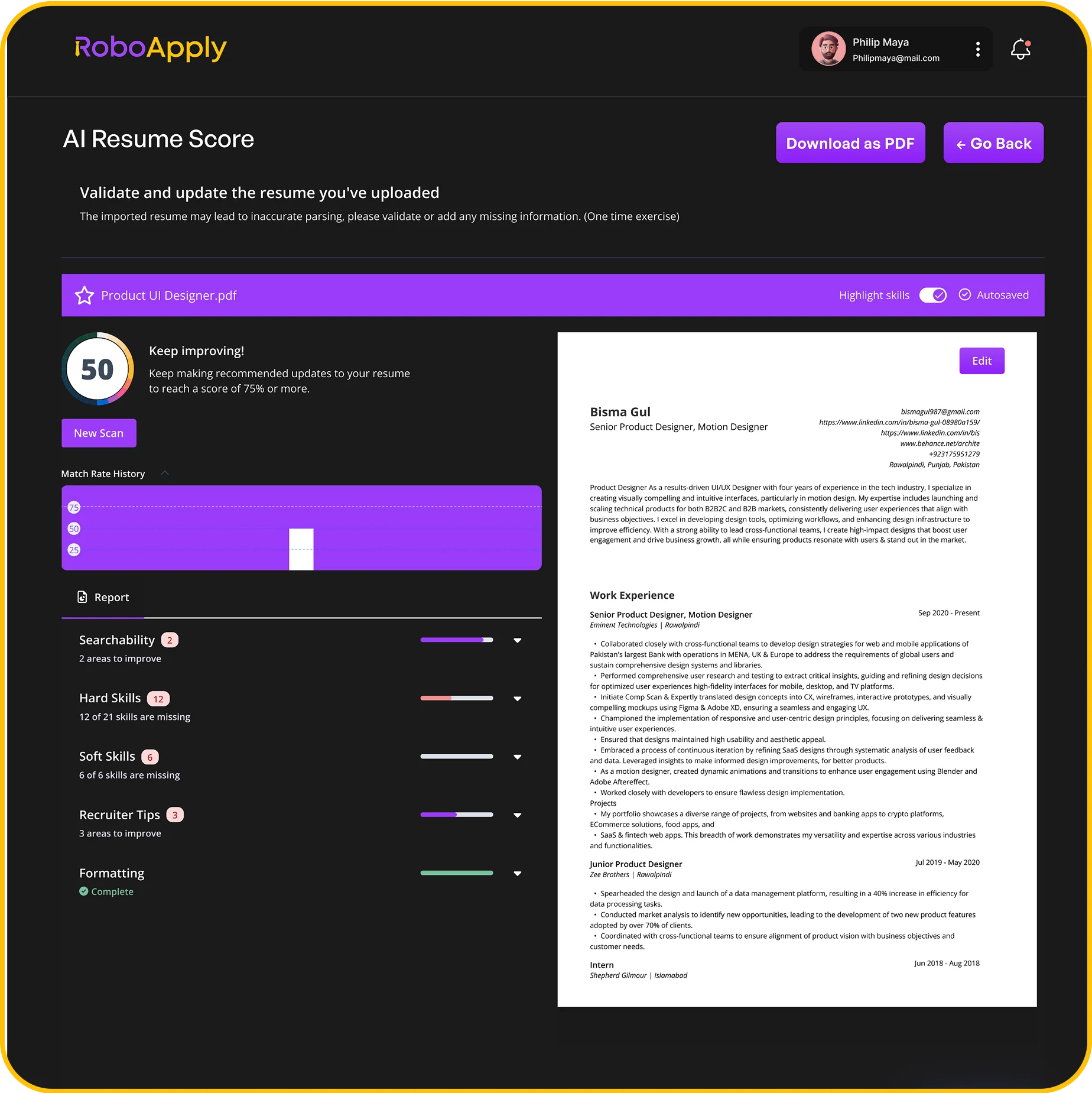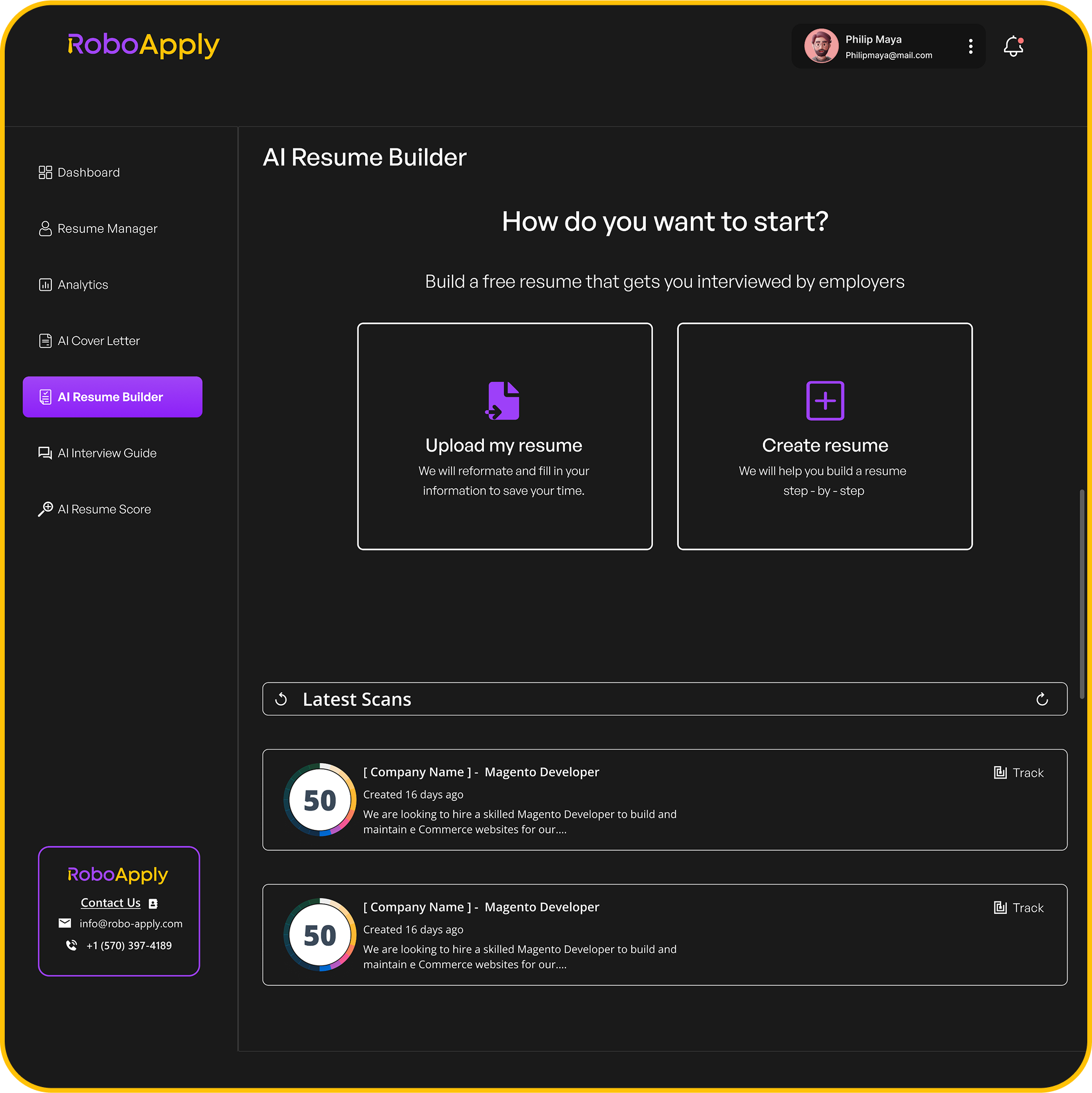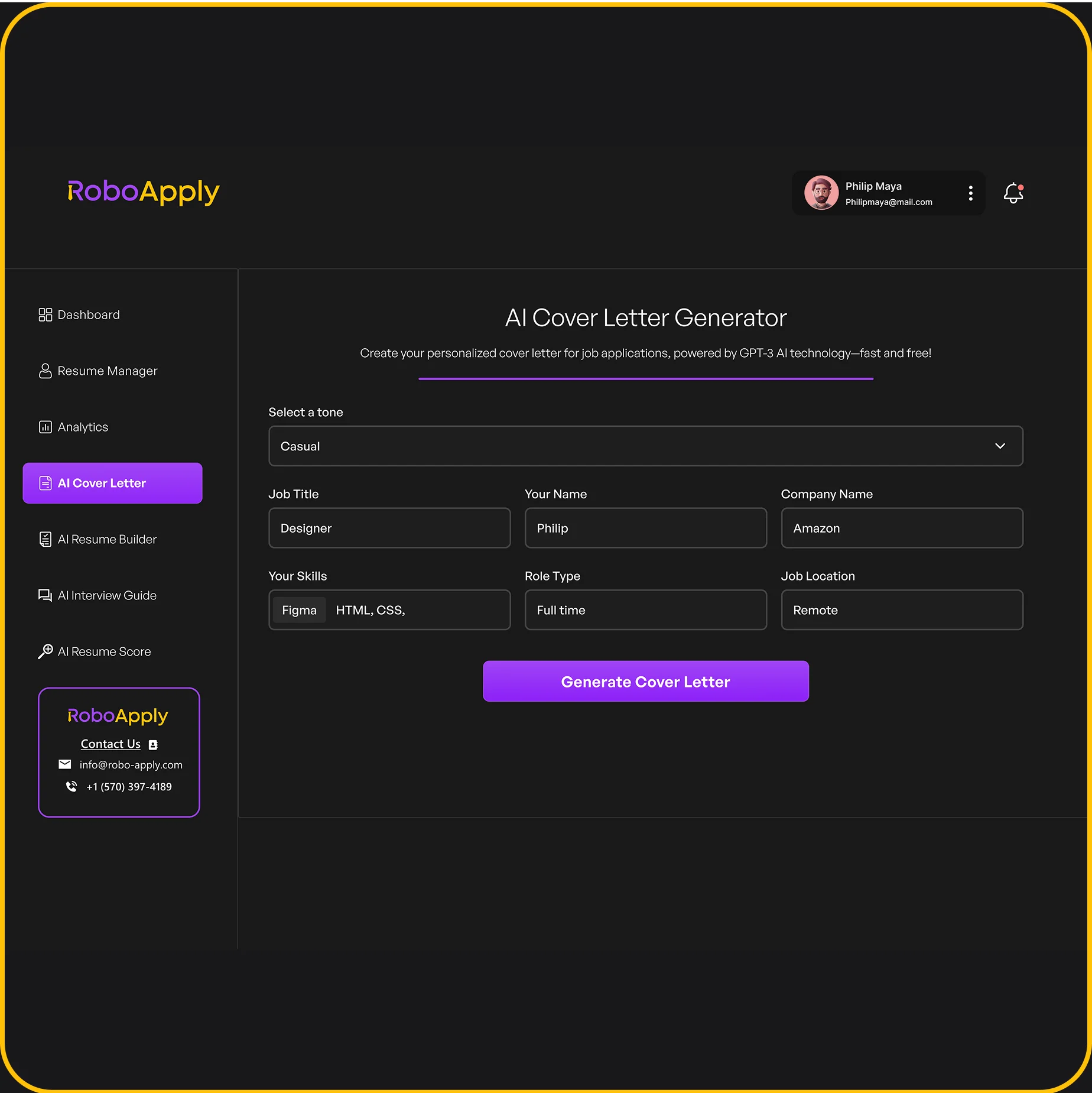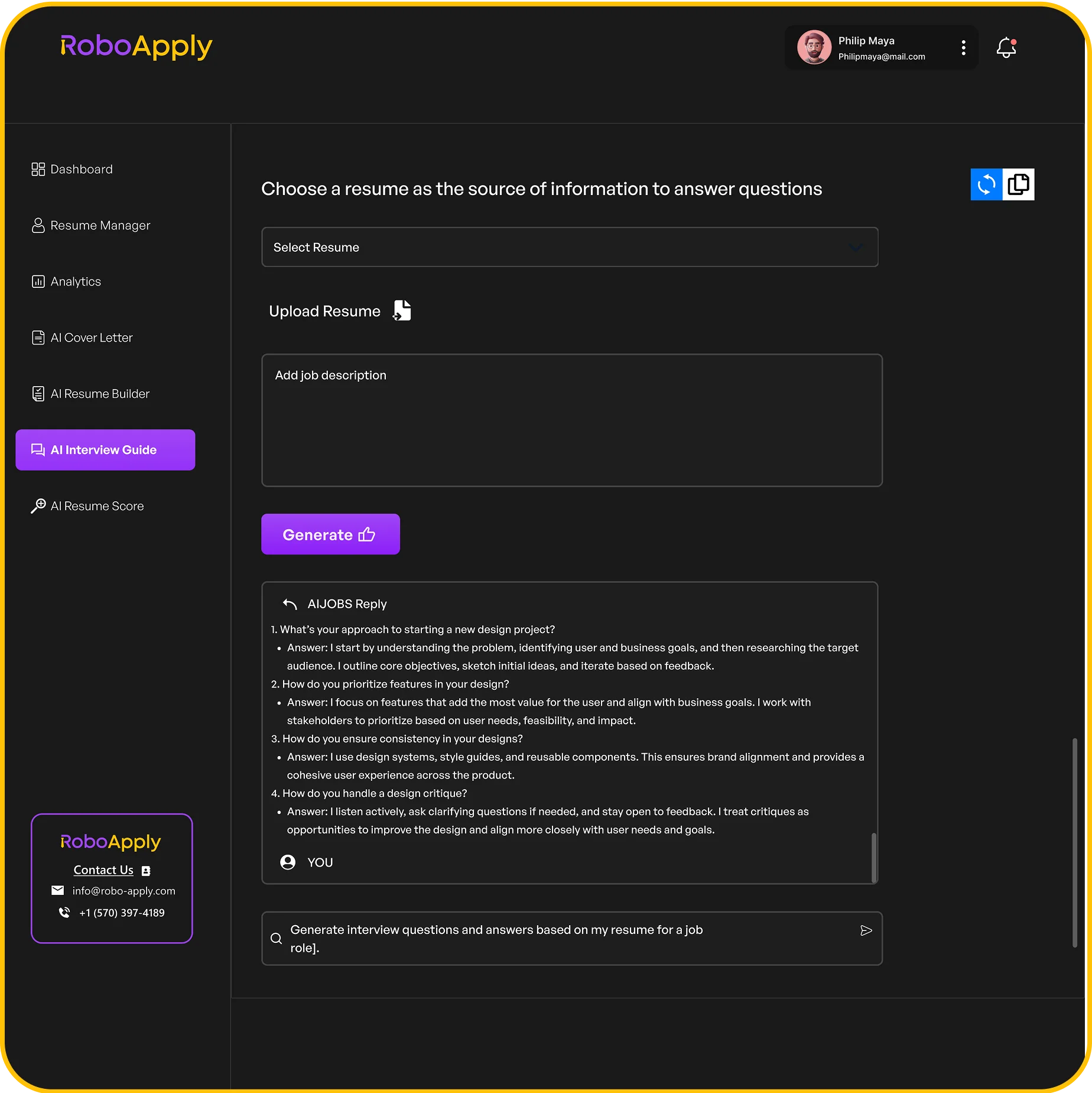Writing a cover letter is a key step in your job application process. It’s not just a formality; it’s your chance to showcase your personality and explain why you’re the right fit for the job. However, getting the cover letter proper format right is crucial. This guide will walk you through the essentials, helping you create a standout application that catches the hiring manager’s attention.
Key Takeaways
- Proper formatting is vital for making a good impression.
- Avoid common mistakes like typos and generic templates.
- Tailor your cover letter for each specific job application.
- Use keywords from the job description to enhance ATS compatibility.
- Keep your cover letter concise and focused on relevant experiences.
Understanding Cover Letter Proper Format
Importance of Proper Formatting
Okay, so why does the way your cover letter looks even matter? Well, think of it like this: it’s your first impression. A well-formatted cover letter shows you pay attention to detail and take the application seriously. Messy formatting can make you look sloppy, even if you have amazing skills. It’s about presenting yourself as a professional from the get-go. You want to make it easy for the hiring manager to read and quickly grasp your qualifications. Think of it as a visual handshake – make it a good one. You can find many cover letter templates online to help you get started.
Common Mistakes to Avoid
There are some pretty common formatting mistakes that can sink your cover letter before it even gets read. Here’s a quick rundown:
- Using weird or hard-to-read fonts.
- Having inconsistent spacing.
- Not using proper margins.
- Making the letter too long (stick to one page!).
- Forgetting to proofread (typos are a big no-no).
Avoiding these errors shows you’re detail-oriented and respect the reader’s time. It’s about presenting a polished and professional image.
How Format Affects Perception
The format of your cover letter isn’t just about aesthetics; it directly impacts how the reader perceives you. A clean, well-organized format suggests you’re organized and professional. A confusing or cluttered format can make you seem disorganized or even careless. The format also influences how easily the hiring manager can find key information. If your skills and experience are buried in a wall of text, they might get missed. So, choosing the right format and sticking to it is key. Make sure to save the document in the correct format.
Choosing the Right Cover Letter Style
Traditional Block Format
The traditional block format is a classic choice. It’s known for its straightforward and professional appearance. All elements, including your address, the date, the recipient’s address, the salutation, body paragraphs, and closing, are aligned to the left margin. This format is easy to read and is suitable for more formal industries. It projects an image of professionalism and attention to detail. It’s a safe bet if you’re unsure about the company’s culture.
Modified Block Format
The modified block format is a slight variation on the traditional style. The key difference is that your address, the date, and the closing are right-aligned. The body paragraphs remain left-aligned. This format offers a touch of visual interest while still maintaining a professional look. It’s a good option if you want to stand out just a little bit without being too flashy. Make sure you use a personal email address for a professional look.
Creative Formats
Creative cover letter formats allow for more visual flair and personalization. These formats might incorporate design elements, graphics, or unique layouts to capture the reader’s attention. However, it’s important to use creative formats judiciously. They are best suited for industries where creativity is valued, such as marketing, design, or media. Before using a creative format, research the company’s culture to ensure it aligns with their values. A simple, modern font is always a good choice.
Using a creative format can be a great way to showcase your personality and design skills, but it’s crucial to prioritize readability and professionalism. Make sure the design enhances, rather than detracts from, the content of your letter. Always save your cover letter as a PDF to preserve the formatting.
Essential Components of a Cover Letter
Header and Contact Information
Your cover letter’s header is like your personal billboard. It’s got to be clear, easy to read, and give the hiring manager all the info they need to get in touch. Make sure your name is prominent, followed by your address, phone number, and email. It might seem basic, but a missing phone number can be a deal-breaker. Keep it professional – no silly email addresses, please!
Salutation and Greeting
Okay, so you’ve got their attention. Now, how do you say hello? “To Whom It May Concern” is a big no-no. Do some digging and find the hiring manager’s name. If you absolutely can’t find a name, “Dear Hiring Manager” is acceptable. Always use a formal salutation like “Dear Mr./Ms./Dr. [Last Name]”. It shows you’ve put in the effort and respect their position. This is a great way to start building rapport with the company.
Body Paragraphs Structure
The body of your cover letter is where you really sell yourself. Think of it as a mini-essay with a clear structure. Here’s a simple breakdown:
- Paragraph 1: Briefly introduce yourself and state the position you’re applying for. Mention where you saw the job posting.
- Paragraphs 2 & 3: Highlight your relevant skills and experience. Use specific examples to back up your claims. Don’t just say you’re a “team player” – describe a time you successfully collaborated on a project.
- Paragraph 4: Explain why you’re interested in this particular company and role. Show that you’ve done your research and understand their mission and values.
Remember, your cover letter isn’t just a summary of your resume. It’s a chance to tell a story and show your personality. Make it engaging and relevant to the job you’re applying for.
Crafting a Compelling Opening Paragraph
Hooking the Reader’s Attention
Your cover letter’s opening is prime real estate. It’s your chance to grab the hiring manager’s attention right away. Think of it as your elevator pitch – you have a limited time to make a strong impression. Start with something that makes them want to keep reading. Maybe it’s a surprising fact about the company, a shared connection, or a brief story that shows your passion for the field. Don’t be afraid to be a little creative, but always keep it professional and relevant.
Stating Your Purpose Clearly
Right after you’ve hooked the reader, make sure you clearly state why you’re writing. Don’t beat around the bush. Tell them what position you’re applying for and how you found out about it. This shows that you’re direct and know what you want. It also helps the hiring manager quickly understand the purpose of your letter. For example, you might say, “I am writing to express my interest in the Marketing Manager position, which I saw advertised on LinkedIn.”
Mentioning the Job Title
It might seem obvious, but always mention the specific job title you’re applying for. This avoids any confusion and shows that you’ve paid attention to the details. It also helps the hiring manager quickly categorize your application. Make sure you spell the job title correctly! It’s a small thing, but it can make a big difference. You can also briefly mention where you saw the job posting. This gives the company context and helps them track where their applicants are coming from. Referring to the job title is a must.
The opening paragraph is your first impression. Make it count by being clear, concise, and engaging. Show your enthusiasm and make the reader want to learn more about you.
Developing the Body of Your Cover Letter
The body of your cover letter is where you really sell yourself. It’s more than just repeating your resume; it’s about showing how your skills and experiences make you the perfect fit for the job. Think of it as telling a story, not just listing facts. You want to grab their attention and make them think, “Wow, this person gets it!”
Highlighting Relevant Skills
Don’t just say you have skills; prove it. Focus on the skills that are most important for the job you’re applying for. Read the job description carefully and identify the key skills they’re looking for. Then, think about times when you’ve used those skills successfully. It’s about making a direct connection between what they need and what you can do. Remember, employers are looking for candidates who are genuinely excited about the opportunity and who will mesh well with the team. Use part of your cover letter to express your enthusiasm for the role and the company. Discuss how your personal values align with the company’s mission or how you admire their work, products, or services. This shows that you’re not just interested in any job, but you’re particularly interested in this job with this position.
Using Specific Examples
Instead of saying “I’m a great leader,” describe a time when you led a team to achieve a specific goal. Use numbers and data to back up your claims. For example, “I led a team of five developers to complete a project under budget and ahead of schedule, resulting in a 15% increase in efficiency.” The journey of crafting your cover letter begins with diligent research. Understanding the company’s culture, its mission, the role’s responsibilities, and the industry challenges can offer insights into how to position yourself as the solution they didn’t know they needed. This groundwork allows you to personalize your letter, making a direct appeal to the company’s needs and showing how your skills and experiences are in sync with their objectives. Addressing the letter to a specific individual, rather than a generic “To whom it may concern,” adds a layer of personalization that can significantly impact your application’s reception.
Aligning with Job Requirements
Make it clear how your skills and experiences align with the specific requirements of the job. Don’t make the hiring manager guess; spell it out for them. Show that you understand what they’re looking for and that you have what it takes to succeed. This is where your research on the company and the role really pays off.
Think of your cover letter as a bridge connecting your past experiences to the company’s future needs. It’s your chance to show them why you’re the best person for the job.
Here’s a simple table to illustrate how to align your skills with job requirements:
| Job Requirement | Your Skill/Experience
The Effective Conclusion: A Call to Action
Reiterating Your Interest
Your closing paragraph is your last chance to make a strong impression. It’s important to restate your enthusiasm for the position and the company. Briefly summarize why you are a good fit, highlighting one or two key skills or experiences that align with the job requirements. This shows the hiring manager that you’re genuinely interested and have carefully considered how you can contribute.
Requesting an Interview
Clearly state your desire for an interview. Don’t be passive; take the initiative. A simple and direct request, such as “I would welcome the opportunity to discuss my qualifications further in an interview,” is effective. You can also mention your availability, but keep it brief. The goal is to make it easy for the hiring manager to take the next step.
Expressing Gratitude
Always thank the reader for their time and consideration. A simple “Thank you for considering my application” is sufficient. This shows professionalism and respect. Avoid being overly effusive or insincere. A genuine expression of gratitude leaves a positive final impression. Remember, customize your closing to align with the job description.
Ending your cover letter with a call to action is super important. It’s like the final nudge that can get you that interview. Make sure you’re clear about wanting to chat more and thank them for their time. It’s a simple thing, but it can make a big difference.
Here’s a quick example of how to end your cover letter:
| Element | Example |
|---|---|
| Reiterate Interest | I am very interested in the Marketing Manager position. |
| Request Interview | I would appreciate the chance to discuss how I can contribute. |
| Express Gratitude | Thank you for your time and consideration. |
| Professional Close | Sincerely, [Your Name] |
Remember to express confidence in your abilities and enthusiasm for the role.
Professionalism and Proofreading
Maintaining a Professional Tone
It’s important to keep your cover letter professional. Think of it as your first impression. The language you use should be clear, concise, and respectful. Avoid slang, overly casual language, or anything that could be misinterpreted. Remember, you’re trying to show the hiring manager that you’re a serious candidate. A professional tone shows you understand workplace communication.
Common Grammar and Spelling Errors
Grammar and spelling errors can really hurt your chances. Even small mistakes can make you look careless or unprofessional. Here are some common errors to watch out for:
- Misusing “there,” “their,” and “they’re.”
- Confusing “your” and “you’re.”
- Using incorrect verb tenses.
- Misspelling common words (like “separate” or “receive”).
Always double-check your work, and if possible, have someone else proofread it for you. A fresh pair of eyes can often catch mistakes you might have missed.
Importance of Final Review
Before you send your cover letter, take the time to review it one last time. This is your chance to catch any remaining errors and make sure everything is perfect. Consider these steps:
- Read the letter out loud to catch awkward phrasing.
- Use a grammar and spell checker, but don’t rely on it completely.
- Check the formatting to ensure everything is consistent and easy to read.
Taking the time for a final review shows that you care about the details and are committed to presenting your best self. Attention to detail is key!
Customizing Your Cover Letter for Each Application
Researching the Company
Before you even think about writing, do your homework. Really dig into the company’s website, social media, and recent news. Understand their mission, values, and current projects. This isn’t just about knowing their name; it’s about understanding what makes them tick. Knowing the company’s culture will help you tailor your letter to show you’re a good fit. It’s like showing up to a party knowing the dress code – you’ll feel more comfortable and make a better impression.
Incorporating Job-Specific Keywords
Read the job description carefully. What skills and experiences are they explicitly asking for? These are your keywords. Sprinkle them throughout your cover letter, but don’t just list them. Weave them into your sentences naturally to demonstrate how you meet their specific needs. Think of it as speaking their language – it shows you understand what they’re looking for and that you’re paying attention to detail. Applicant Tracking Systems ATS compatibility will thank you for it, too.
Tailoring Your Message
Don’t send the same generic cover letter to every company. That’s like wearing the same outfit to a wedding and a funeral – it just doesn’t work. Tailor your message to each specific job and company. Highlight the skills and experiences that are most relevant to the position. Explain why you’re interested in this particular company and this particular role. Show them you’ve put in the effort to understand their needs and that you’re genuinely excited about the opportunity. A personalized cover letter goes a long way.
Customizing your cover letter shows you’re not just looking for any job, but that you’re specifically interested in this company and this role. It demonstrates your attention to detail and your genuine enthusiasm, which can make a big difference in a competitive job market.
Utilizing Keywords for ATS Compatibility
Understanding Applicant Tracking Systems
Applicant Tracking Systems (ATS) are software applications used by companies to automate the recruitment process. They scan resumes and cover letters for specific keywords to filter candidates. Understanding how these systems work is key to getting your application noticed. Basically, the ATS is the gatekeeper, and you need to know the password to get through.
Identifying Key Terms in Job Descriptions
The job description is your cheat sheet. Carefully analyze it to identify the skills, qualifications, and experience the employer is seeking. Look for nouns and phrases that describe specific technologies, certifications, or industry knowledge. These are the keywords you need to incorporate into your cover letter. For example, if a job description mentions “project management,” “Agile methodologies,” and “Scrum master certification,” these should be included in your letter.
Strategically Placing Keywords
Once you’ve identified the keywords, strategically place them throughout your cover letter. Don’t just stuff them in randomly; make sure they fit naturally within the context of your sentences. Use them in your opening paragraph, when describing your skills and experience, and in your closing statement. Think of it as sprinkling seasoning on a dish – just enough to enhance the flavor without overpowering it. Make sure to optimize your resume for the ATS.
It’s important to strike a balance between using keywords and maintaining a natural, engaging writing style. Overstuffing your cover letter with keywords can make it sound robotic and unnatural, which can be a turn-off for human readers.
Here’s a simple example of how to incorporate keywords:
| Job Requirement | How You Meet It The ATS-friendly resume is a must for any job seeker.
Additional Tips for a Standout Cover Letter
Keeping It Concise
Okay, so you want to impress them, right? But nobody wants to read a novel. Keep your cover letter to one page. Seriously. Hiring managers are busy people. Get to the point, highlight your most relevant skills, and leave them wanting more. Think of it as a movie trailer, not the whole movie. Brevity is your friend here. Don’t ramble, and make every sentence count. It’s about quality, not quantity.
Showing Enthusiasm for the Role
Let’s be real, enthusiasm is contagious. If you’re excited about the job, show it! Don’t just say you’re interested; explain why. What specifically about the role or the company gets you pumped? Did you see their latest project? Mention it! Did you read an article about their CEO? Bring it up! Showing genuine excitement can set you apart from other candidates who are just going through the motions. It shows you’ve done your homework and you’re not just sending out a generic application. Make sure to request an interview to show your enthusiasm.
Demonstrating Cultural Fit
Companies aren’t just looking for skills; they’re looking for people who will fit in with their team. Do your research and try to get a sense of the company’s culture. Are they innovative and fast-paced? Do they value collaboration and teamwork? Tailor your cover letter to show how your personality and work style align with their values. Use examples from your past experiences to illustrate how you embody those qualities. For example, if they value innovation, talk about a time you came up with a creative solution to a problem. Demonstrating cultural fit can be the thing that tips the scales in your favor. It shows you’re not just a good worker, but a good fit for their team. Make sure to emphasize your qualifications to show you are a good fit.
Examples of Effective Cover Letter Formats
Full Template Examples
Let’s get real: staring at a blank page is the worst. Sometimes you just need to see a few examples to get your own creative juices flowing. Looking at full cover letter examples can be super helpful. It’s not about copying, but more about understanding how different formats work in practice. Think of it like looking at blueprints before building a house. You get to see the structure, the flow, and how all the pieces fit together.
- Example 1: Traditional block format for a corporate job.
- Example 2: A modern, creative layout for a marketing position.
- Example 3: A T-format letter highlighting specific skills for a technical role.
Analyzing Successful Letters
Okay, so you’ve seen some examples, but what actually makes them good? It’s time to put on your detective hat and analyze what works. Successful cover letters aren’t just about listing skills; they’re about telling a story. They connect your experience to the company’s needs and show, not just tell, why you’re a great fit. Pay attention to the tone, the language, and how they address the specific requirements of the job. What are the key elements that make these letters stand out? How do they grab your attention and keep you engaged?
Analyzing successful letters involves dissecting their structure, language, and overall impact. It’s about understanding why they work and how you can apply those principles to your own writing. Look for patterns in how they address the job requirements, showcase relevant skills, and express enthusiasm for the role.
Learning from Real-World Applications
Theory is great, but real-world application is where the rubber meets the road. How are people actually using these cover letter formats to land jobs? Look for case studies, testimonials, or even just anecdotal evidence of what’s working in the current job market. Are there any specific industries or roles where certain formats are particularly effective? What are the common mistakes people are making, and how can you avoid them? Understanding the real-world applications of different cover letter formats can give you a serious edge in your job search. It’s about learning from the successes (and failures) of others and adapting your approach accordingly.
When it comes to writing a cover letter, the format you choose can make a big difference. A well-structured cover letter can grab the attention of hiring managers and help you stand out. For great examples of cover letter formats that work, check out our website. We have tips and templates that can help you create a winning cover letter! Don’t wait—visit us today to get started!
Wrapping It Up: Your Path to a Great Cover Letter
In conclusion, crafting a solid cover letter is a vital step in your job application journey. It’s not just about listing your experiences; it’s about connecting the dots between your skills and what the employer needs. Remember to keep it clear, concise, and tailored to each job. Use the right format, sprinkle in some keywords, and don’t forget to show your personality. A well-written cover letter can make a real difference in getting noticed. So take your time, proofread, and make sure it reflects your best self. Good luck out there!
Frequently Asked Questions
What is the purpose of a cover letter?
A cover letter helps you introduce yourself to a potential employer and explains why you are a good fit for the job.
How long should a cover letter be?
A cover letter should usually be one page long, focusing on your most relevant skills and experiences.
What should I include in the opening paragraph?
In the opening paragraph, you should grab the reader’s attention, state your purpose, and mention the job you are applying for.
Is it necessary to customize each cover letter?
Yes, customizing each cover letter for the specific job and company shows that you care and understand what they are looking for.
What format should I use for my cover letter?
You can use a traditional block format or a modified block format, depending on the job and your personal style.
How can I make my cover letter stand out?
To stand out, keep it concise, show enthusiasm for the role, and highlight your relevant skills with specific examples.
What common mistakes should I avoid in a cover letter?
Avoid spelling and grammar errors, being too generic, or making it too long.
How important is proofreading my cover letter?
Proofreading is very important. A clean, error-free cover letter shows professionalism and respect for the hiring manager.
